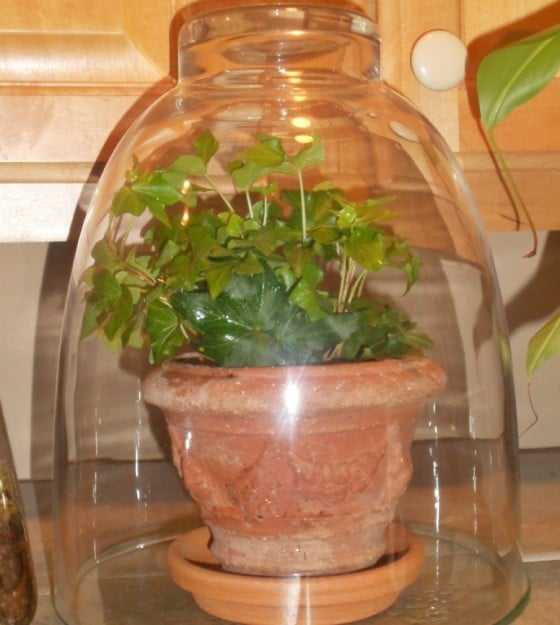Garden Cloche | Tips and Instructions
A garden cloche is essentially a scaled-down greenhouse used to protect young plants against the elements. First designed and used in the 17th century, cloches are still in use today. Using an outdoor garden cloche throughout the spring is an effective way to protect small plants from unpredictable weather while getting a jump-start on the […]

A glass garden cloche can be used to protect plants from the elements.
Photo Credit : Shelley Wigglesworth
Photo Credit : Shelley Wigglesworth
- Save large clear plastic water and soft drink containers with caps.
- Rinse the empty containers thoroughly and allow to air dry.
- Cut the bottom portion of the container off with sharp scissors allowing for adequate height at the top of the bottle.
- Re-cap the bottle top.
- Place the bell shaped top over seedlings.
Shelley Wigglesworth
Shelley (Fleming) Wigglesworth is an award-winning freelance journalist from Maine and a certified Maine Master Gardener who writes gardening articles on a regular basis for NewEngland.com. Her work can be found in the following publications: The Village Magazine, York County Coast Star, Yankee Magazine (online), National Fisherman Magazine, Commercial Fisheries News, Points East Magazine, Coastal Angler Magazine and The Maine Lobstermen's Association's "Landings."
More by Shelley Wigglesworth

